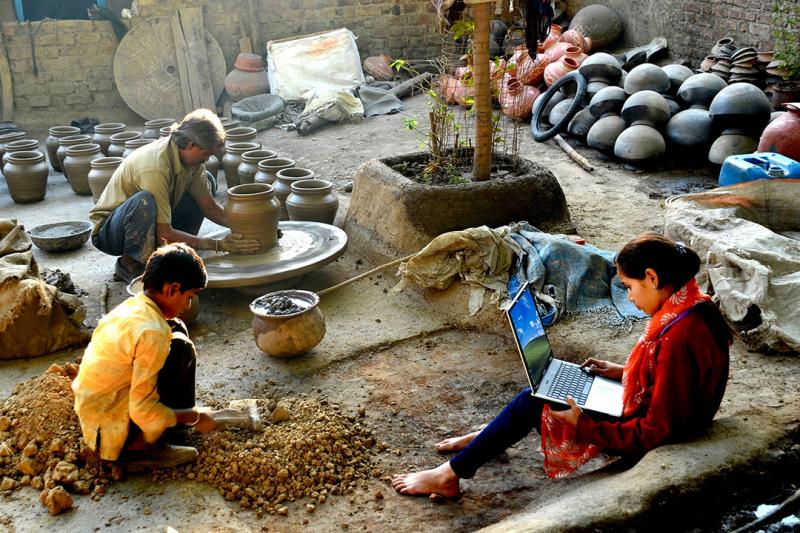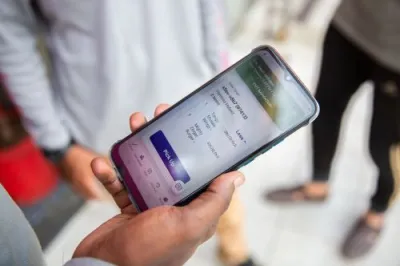Can Technology Push Microinsurance Further? 4 Reasons to Say Yes
Those who most need insurance, and the stability that it provides, are often the least likely to have it. In developing countries, insurance coverage is exceedingly low – often below 5% of the country’s population. Few products are designed taking into account the risk and affordability levels of the poor. However, progress is being made: significant business model improvements over the years are helping drive the expansion of mobile insurance in multiple markets today, with 17 million policies issued since June 2014 and five deployments having more than one million mobile insurance policies since operations lauched within the last three years.
A recent study by CGAP suggests that despite this progress, four key opportunities across the insurance value chain are underexplored. There is great potential to better design and market insurance products for poor customers, if insurers and their intermediaries pay greater attention and are bold enough to experiment. Grasping these opportunities and harnessing the power of mobile technology will increase both the access to, as well as use of, health and life insurance among low income populations:
- Marketing: Targeting marketing efforts through customer segmentation using mobile data, leading to increased customization of service provision
- Product Design: Leveraging social media links for collective insurance to reduce costs for customers and increase efficiencies for providers
- Distribution: Taking advantage of mobile phone features to enable faster and cheaper insurance signup for customers
- Pricing: Tracking customer behavior through remote sensing for increased accuracy in premium calibration
Marketing
The extensive use of mobile phones in developing countries has created data on customers’ finances and spending patterns for sections of the population that did not previously have a financial track record. Using such data, microinsurance companies can tailor marketing to customers’ willingness and ability to pay, and therefore may result in an increase in profitable uptake.
For example, Cignifi, a mobile data analytics firm, is taking a big step forward by pioneering the use of mobile data for insurance provision. In a pilot with a microinsurance specialist in Sub-Saharan Africa, the firm is developing an algorithm to analyze numerous mobile data variables, such as volume and duration of voice calls, mobile money transactions, mobile savings, social networks and demographics to determine a premium appropriate for different customer segments. Such data will allow its microinsurance partner to tailor its SMS/text message-based marketing efforts to specific customer segments in order to increase likelihood of uptake.
For example, a customer who has mobile money transactions below a certain threshold and makes short calls to a limited number of people could have behaviors suggesting he could be marketed a microinsurance product with a low premium and limited coverage. On the other hand, customers who are more advanced in their mobile use may be marketed a product with higher premium and coverage levels. As mobile data analytics get more sophisticated over the coming years, we will likely witness insurance providers offering far more customized marketing to sections of the population that were previously thought to be off-limits.

Product design
Insurance providers could use social media to sell collective insurance policies to friends or family. These policies may combat moral hazard for small claims, reduce high transaction costs faced by insurance providers for small payments, and reduce costs for customers.
Friendsurance, a German peer-to-peer (P2P) insurance service, allows individuals to connect with people from their social networks to purchase collective insurance. Although part of the premium is paid to insurance companies with whom Friendsurance has partnerships, the other part is set aside to cover the cost of small claims, which would otherwise be paid by policy-holders as deductibles. Customers receive back whatever amount is not claimed. They are therefore less likely to make fraudulent small claims, as this would damage their own and their friends’ interests. According to Friendsurance, its policyholders save up to 40% on premiums compared to traditional insurance, while associated insurers reduce their claims ratio and churn rate. Such P2P insurance policies could be conceivable in other markets, including developing countries.
Distribution
Most who have signed up for insurance can attest that it is not an easy experience. Insurance terms are difficult to understand and registration often requires much paperwork. For people with limited literacy living in remote areas, these logistical deterrents become barriers. Linda Jamii, a micro-health-insurance product in Kenya, leverages mobile phone features to reduce these barriers. During registration, agents use feature phone cameras to capture documentation and pictures of customers, increasing efficiency and convenience for the provider and reducing costs for customers.
Another aspect of signup – insurance providers’ need to validate information submitted by subscribers – significantly drives up costs. However, insurance providers offering mobile microinsurance in partnership with telecom companies may have alternate data sources they could use to cross-reference this information. For example, GrameenPhone, the telecom partner in Nirvoy Life Insurance, has information on its customers’ family members through its “Friends and Family” dialing feature. Nirvoy can cross-reference this data to verify the dependents listed by its subscribers for their life insurance plan. Similarly, cell-tower triangulation data from GrameenPhone enables Nirvoy to verify geographical information submitted by subscribers.
Pricing
Insurance pricing rarely reflects the risk profiles of individuals perfectly, since generalized proxies are used to calibrate premiums for customers. Because the low-income, young and unbanked generate less of the data that feeds into such proxies, insurance companies may be unable to fully assess risk profiles of these groups and they may tend to have disproportionately high premiums. However, embedded mobile technology could allow insurance companies to customize premiums based on actual behavior. By installing onboard diagnostic devices in cars, for example, insurance companies in the US gather data on a driver’s actual driving habits, and adjust their premium accordingly. Progressive Insurance’s Snapshot product has two million subscribers, and offers drivers up to 30% discount on their premiums depending on their driving patterns.
This same concept can have applications for low-income populations in developing countries. For example, health insurance premiums could be reduced by tracking household use of clean cookstoves or water filtration systems. For this vision to become a reality, however, further research would be needed to ascertain whether this is economically viable for insurance companies, given the investment required for a remote sensing database. In addition, insurance and consumer product companies would need to partner and work out an acceptable revenue model. There might also be data security, data sharing and other potential risks that would need to be appropriately mitigated.
In developing countries, there are fundamental barriers to insurance provision that can’t be fixed by technology alone, including continued lack of awareness and insufficient customer demand for formal insurance products. However, these four opportunities identified, which better leverage the power of mobile technology, could play an important role to:
- Further enhance the business model of insurance providers, by allowing more targeted marketing and monitoring, better distribution and a reduction in inefficiencies relating to small claims.
- Further improve the value proposition to customers, by increased accuracy in calibration of premiums and the return of unclaimed premiums.
As the mobile revolution marches on, actors in the microinsurance space should continue to experiment and refine both products and delivery, as access to insurance is a fundamental component to protect the poor from severe and recurrent risks that could push them into greater poverty.




Comments
Citadel Micro Insurance EA
Citadel Micro Insurance EA Agency Ltd is a premier microinsurance intermediary in Kenya aspiring to become the first Micro Insurance Company in Kenya once legislation has been approved. As founder of Citadel my engagement in microinsurance spans over 6 years and i was a stakeholder in the development of the draft Kenya Micro insurance policy frame work
Citadel therefore creates client centric products and looks for underwriters to write the risk. Ciadel provides end to end solutions to its scheme and this has enabled us create a technological platform which will change the how microinsurance is being administered. This includes cashless payment platform (premiums and claims) enrolment and back office management system.
This is critical not only in cutting down admin costs by more than 50% but improves client experience since it is paperless. We realise that whilst mobile payments have induced accessibilty but we have also found out that the transactiinal fees charged make it more expensive in product pricing. Literacy levels are also still low amongst the masses hence clients who are not phone savy have challenges in accesing micro insurance products. Taking all this into account we therefore are confident that we have created an eco system that will enrich client experience and deepen financial inclusion.
Distributiin of our products is also based on community based agency network whiich enables greater confidence and acceptance of insurance as a risk transfer mechanism.
Our premier products are Tumaini ya Jamii meaning Hope for the family and we have just unveiled an un employment cover during the international labour day celebrations in Kenya on May 1, 2015. The product is named Linda Salo meaning Protect your income and it cushions employees from job losses by paying an income for three months and it has a benefit of hospital cash in case an employee is admitted when the policy is active. Our website is under development but detais can be accessed from citadel.co.ke
Best
Elvis Ackel
Questions - Where insurance
Questions - Where insurance policies are distributed (underwritten) via telephone provider (sign up via text and get confirmation of coverage via text), how is the validity of the insurance contract established? If a policyholder takes the insurer to court, what would be the proof of insurance coverage that such policy holder can present? Is the text confirmation equal in value as a signature on a contract?
In this digital era laws
In this digital era laws should be amended where none exists to recognise and accept electronic information transfer.
Where insurance is conducted through a mobile interface it therefore presupposes that the law recognises the validity of such a transaction and should a claim arise then the logs from the telco provider or transactional messages from the clients phone should suffice as evidence should a dispute arise in the admissibility of a claim.
Similarly where a transaction has been conducted the resultant text will suffice as proof of validity or acceptance of insurance cover. A corresponding log from the telco will act as a back up for future reference.
Do you know any iniciative
Do you know any iniciative from social and solidarity economy that uses technology to financial inclusion?
I just see companies doing this, but not actors from Social and Solidarity Economy.
thanks
This is a very interesting
This is a very interesting point of view and my take is that the technology which is available is not primarily used as a microinsurance platform but they were built to service other core services such as cashless or mobile money transfer platforms.
In this regard I am yet to see any versatile and integrated technological platform that has been created specifically to be used as microinsurance platform both from a social perspective and company interface.
A deliberate effort needs to be put in place between microinsurance players and software technicians to create an affluent system that not only addresses user interface but is capable of handling back office management and also act as viable money transfer mechanism which is cost effective to the end users so that the overall value of the product is beneficial to customers whilst maintaining profitability to companies.
Add new comment